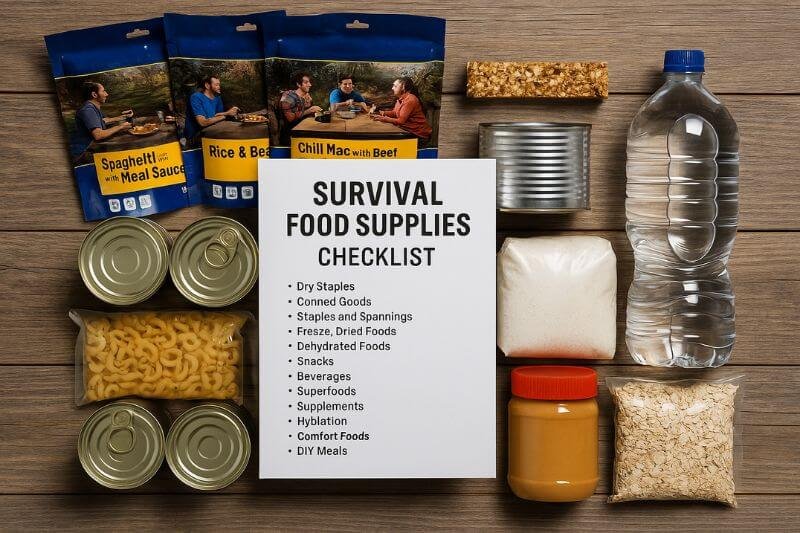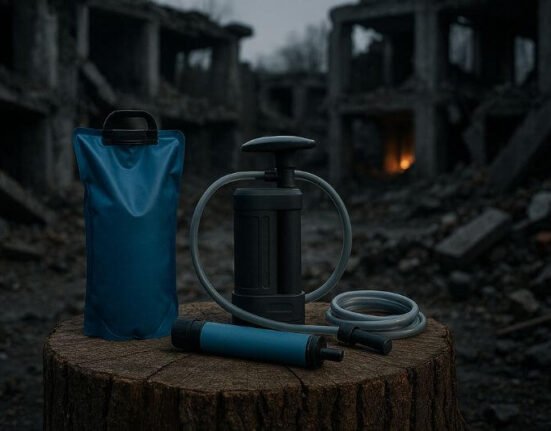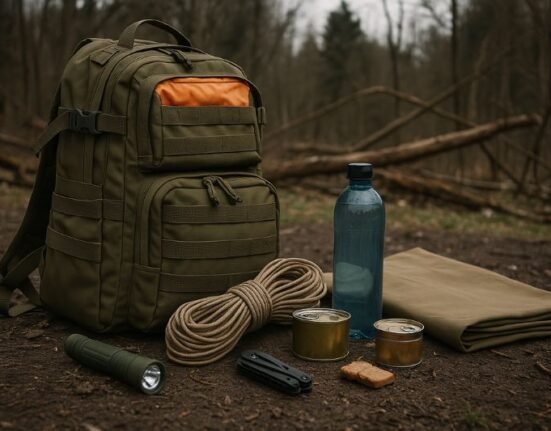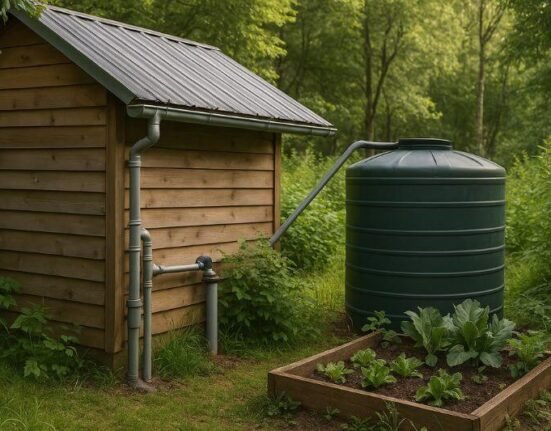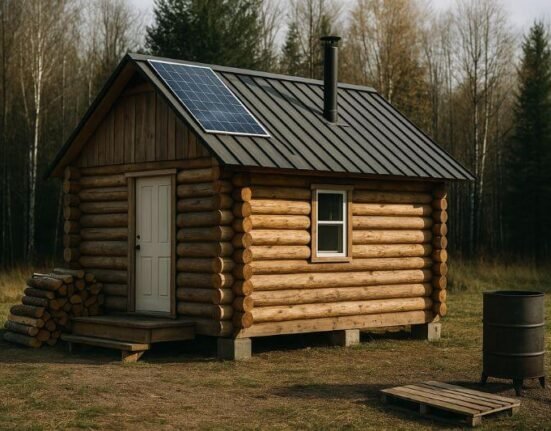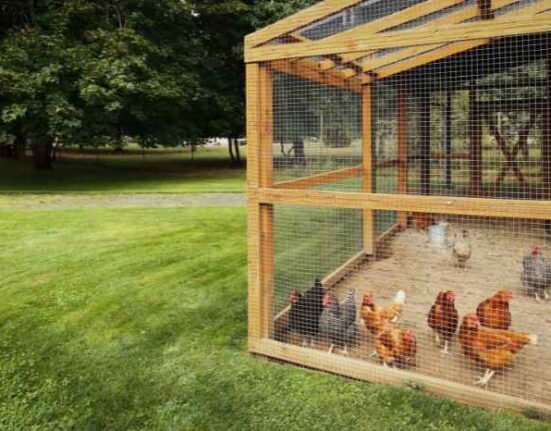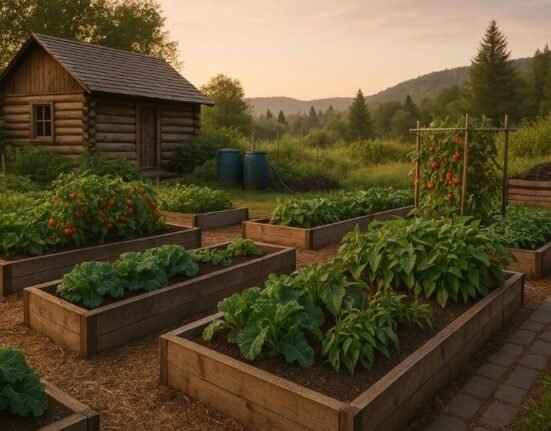When the next crisis hits — be it a cyberattack, a pandemic, or a grid failure — your survival could depend on one thing: your survival food supplies. In times of chaos, store shelves go empty in hours. But those who prepare in advance? They don’t panic — they thrive.
In this guide, we’ll break down the smartest, most nutritious, and long-lasting food items you should stock before it’s too late — with real-world examples, expert tips, and common mistakes to avoid.
Why Stocking Survival Food Supplies Is Non-Negotiable
Most people underestimate how fast society can unravel. In March 2020, grocery shelves emptied across the world — and not just toilet paper. Staple foods vanished in 48 hours.
“Food insecurity becomes widespread within 7 days of major disruption.” — UN Global Crisis Monitoring Report, 2023
Having the right food stored gives you:
- Peace of mind
- Energy to make decisions
- Security for your family
- Bartering power if needed
Let’s now explore how to build a stockpile that actually works — not just looks good on Instagram.
1. The Golden Rules of Survival Food Planning
Before buying anything, remember this:
📌 The 5 Golden Rules:
- Store what you eat, eat what you store
- Focus on calorie density + shelf life
- Diversify to avoid food fatigue
- Include comfort foods
- Rotate everything regularly
🔁 Rotation = Longevity
Use the FIFO method — First In, First Out — and always label items with dates.
✅ Pro tip: Do a monthly “prepper pantry meal night” to rotate and test supplies.
2. Top Survival Foods by Category
Let’s break it down by what actually keeps you alive — and sane — during a crisis.
🥣 Dry Staples: High-Calorie, Long Shelf Life
| Item | Why It’s Great | Shelf Life |
|---|---|---|
| White rice | Calorie-dense, easy to cook | 25+ years |
| Rolled oats | Quick meals, fiber-rich | 18–24 months |
| Pasta | Versatile, stores well dry | 20–30 years |
| Lentils | Protein + iron + fast cooking | 10+ years |
| Beans (dry) | Protein + variety | 25+ years |
💡 Store in Mylar bags + oxygen absorbers + food-grade buckets for optimal life.
🥫 Canned Goods: Ready-to-Eat and Shelf-Stable
| Item | Use Case | Shelf Life |
|---|---|---|
| Tuna, salmon | Protein, omega-3 | 3–5 years |
| Chicken, beef | Hearty meals, ready-to-eat | 3–5 years |
| Vegetables | Nutrients + fiber | 2–5 years |
| Tomato paste/sauce | Base for stews and pastas | 1–3 years |
| Beans (canned) | Already cooked, saves fuel | 2–5 years |
✅ Always have a manual can opener on hand.
🧂 Staples and Seasonings: Don’t Neglect Flavor
- Salt (preserves, flavors, and rehydrates)
- Sugar (energy, baking, morale)
- Baking soda & powder (for cooking)
- Dried herbs and spices (rotate every 12–18 months)
- Bouillon cubes or stock powder
“Morale drops faster than blood sugar when every meal tastes the same.” — Homestead Survival Guide, 2022
3. Freeze-Dried and Dehydrated Foods: Lightweight, Long-Term
Ideal for long-term storage, bug-out bags, and off-grid scenarios.
✅ Recommended:
- Freeze-dried meals (Mountain House, ReadyWise, Augason Farms)
- Dehydrated fruits and vegetables
- Instant mashed potatoes
- Powdered eggs
- Powdered milk
| Format | Prep Needed | Shelf Life |
|---|---|---|
| Freeze-dried | Add hot water | 20–30 years |
| Dehydrated | Soak or boil | 10–15 years |
🎒 Include a few single-serve freeze-dried meals in your EDC or Get-Home Bag.
4. Shelf-Stable Proteins
Getting complete proteins in a crisis is critical for strength, immunity, and healing.
🔋 Protein Power Sources:
- Peanut butter (high calorie, comfort food)
- Powdered protein (whey or plant-based)
- Jerky (beef, turkey, or DIY)
- Shelf-stable tofu
- Canned beans + rice = complete protein
“Without protein, your body will burn muscle — even if you’re eating.” — Nutrition for Preppers, 2023
5. Survival Baking and DIY Meal Bases
Learn how to bake with preps. It saves money and boosts morale.
🍞 Store:
- All-purpose flour (up to 1 year in airtight container)
- Yeast (freeze for longevity)
- Baking powder + soda
- Cornmeal (great for survival bread or polenta)
- Lard or ghee (shelf-stable fats)
🔥 Try this test: Make bannock, hardtack, or basic survival bread once per month with stored goods.
6. Snacks and Quick Calories for Emergencies
While you’ll want bulk, nutritious meals, don’t overlook the power of easy-to-eat, high-calorie snacks. These provide immediate energy, comfort, and quick boosts in stressful times.
🍫 Best Survival Snacks:
- Granola bars (store-bought or homemade)
- Energy bars (e.g., Clif, RxBar, or DIY nut butter bars)
- Nuts and seeds (almonds, walnuts, sunflower seeds)
- Trail mix (mix of dried fruits, nuts, and chocolate)
- Chocolate (dark or milk; easy morale booster)
📦 Shelf-Stable Packs:
- Single-serving packets of peanut butter or hummus
- Cheese powder (for mac and cheese, snacks)
- Hardtack (high-calorie, long-lasting cracker)
- Jerky (beef, turkey, or biltong)
🧳 Pro tip: Stock small grab-and-go bags of these snacks in your Get-Home Bag or emergency kit.
7. Survival Beverages: Coffee, Tea, and Hydration
Caffeine, sugar, and hydration are key to maintaining alertness and morale during long-term survival. These drinks also provide a boost of warmth and comfort in cold weather.
☕ Essential Survival Beverages:
- Coffee (instant, freeze-dried, or beans if you can grind them)
- Tea bags (black, green, herbal for variety)
- Hot chocolate mix (calorie-rich and comforting)
- Electrolyte drink powders (for hydration and replenishing salts)
- Powdered drink mix (like Gatorade, Kool-Aid)
💧 Hydration Options:
- Water purification tablets (backup in case filters fail)
- Water flavoring tabs (to encourage hydration)
- Hydration bladders (a portable system for drinking on the go)
“Stay hydrated — you can go days without food, but dehydration will shut you down in hours.” — Survival Hydration, 2022
8. Superfoods and Supplements for Long-Term Health
Superfoods are nutrient-dense, calorie-efficient, and often packed with antioxidants. They’re a great addition to your survival food stockpile to ensure you’re getting a balanced, healthy diet under stressful conditions.
🥗 Must-Have Superfoods:
- Chia seeds (fiber + omega-3)
- Spirulina powder (protein, antioxidants)
- Moringa powder (vitamin-packed green powder)
- Wheatgrass (rich in vitamins, boosts immune system)
- Cacao powder (boosts energy, antioxidants)
🌿 Pro tip: Keep your superfoods in vacuum-sealed bags or Mylar pouches for long-term storage.
Supplements:
- Multivitamins (cover essential nutrients like Vitamin C, D, Iron, etc.)
- Probiotics (to support digestion and immunity)
- Electrolyte supplements (for muscle recovery and hydration)
9. Common Mistakes When Stocking Survival Food Supplies
Even the most prepared preppers can make mistakes when it comes to food. Let’s go over some of the most common errors and how to avoid them.
🚫 Mistakes to Avoid:
- Overstocking on canned goods – Heavy, short shelf life, and limited variety.
- Neglecting to test food items – Always try out your stockpile for taste and usability.
- Ignoring your cooking method – If you don’t have a working stove or fuel, your food won’t be useful.
- Only storing non-perishable items – Include some fresh or freeze-dried foods for nutritional balance.
- Forgetting comfort foods – Chocolate, coffee, and snacks help maintain morale during stressful times.
10. Proper Storage: Maximize Shelf Life and Organization
Proper storage is key to maximizing the shelf life of your survival food supplies. If stored improperly, even the best foods will spoil or degrade quickly.
🏠 Storage Methods:
- Cool, dark, dry places are essential. Avoid heat or humidity.
- Use food-grade containers, Mylar bags with oxygen absorbers, and vacuum-seal foods whenever possible.
- For items like rice or beans, use 5-gallon food-grade buckets with tight-fitting lids.
“Proper storage is just as important as what you store.” — Prepper’s Guide to Food Security, 2022
🧰 Organize and Label Your Stockpile:
- Label everything with dates (e.g., purchase or storage date)
- Create a rotating system where older items are used first
- Store food in categories (grains, canned goods, protein, snacks, etc.)
Internal Links to Enhance Your Prepper Journey:
- Top 25 Survival Supplies Every Beginner Prepper Needs
- Bug Out Bag Essentials: What to Actually Pack
- Long-Term Survival Supplies List: 90 Days Off-Grid Preparedness
- How to Build a 3-Tier Survival Supply System
Conclusion: Stocking Smart Is the Key to Survival
When it comes to survival food supplies, it’s not about having everything. It’s about having the right things: calorie-dense, nutritious, and long-lasting food, stored in a way that’s easy to access and use.
The most important aspect? Rotation and testing. Make sure your stockpile can actually sustain you and your loved ones during a crisis.
👉 Your next step:
✅ Download our Printable Survival Food Supply Checklist and start building your stock today.
✅ Audit your food storage monthly to keep it fresh and functional.
✅ Share this guide with your preparedness group and community!
FAQ: Survival Food Supplies
What is the best way to store bulk grains like rice and oats?
- Mylar bags + oxygen absorbers in food-grade buckets are the best method for long-term storage.
How much food should I store per person?
- Aim for 90 days of food per person, or a minimum of 1,800–2,000 calories per day.
Can I store fresh food long-term?
- Fresh food doesn’t last long without refrigeration. Focus on freeze-dried, dehydrated, and canned options for long-term storage.









